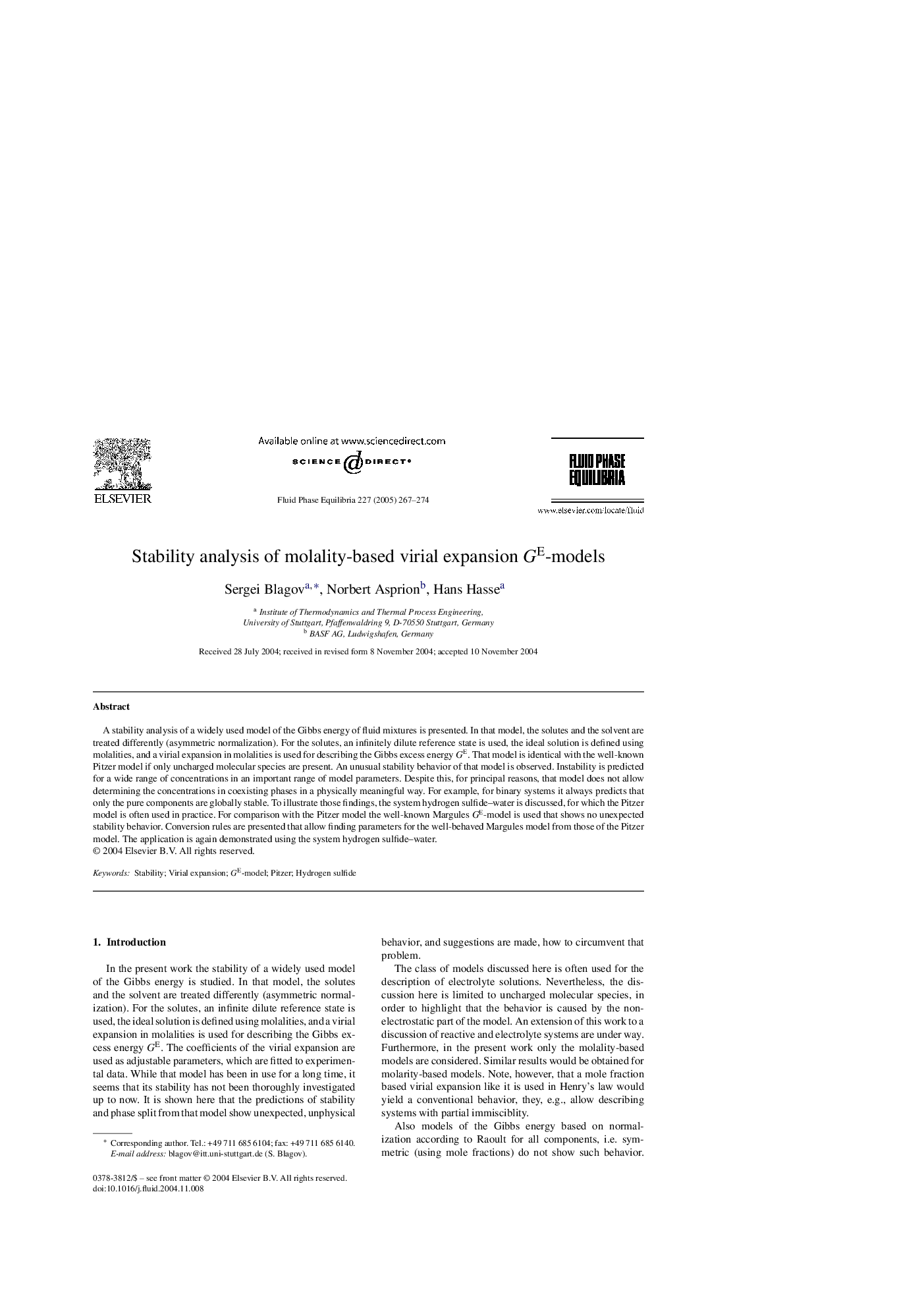| Article ID | Journal | Published Year | Pages | File Type |
|---|---|---|---|---|
| 10271669 | Fluid Phase Equilibria | 2005 | 8 Pages |
Abstract
A stability analysis of a widely used model of the Gibbs energy of fluid mixtures is presented. In that model, the solutes and the solvent are treated differently (asymmetric normalization). For the solutes, an infinitely dilute reference state is used, the ideal solution is defined using molalities, and a virial expansion in molalities is used for describing the Gibbs excess energy GE. That model is identical with the well-known Pitzer model if only uncharged molecular species are present. An unusual stability behavior of that model is observed. Instability is predicted for a wide range of concentrations in an important range of model parameters. Despite this, for principal reasons, that model does not allow determining the concentrations in coexisting phases in a physically meaningful way. For example, for binary systems it always predicts that only the pure components are globally stable. To illustrate those findings, the system hydrogen sulfide-water is discussed, for which the Pitzer model is often used in practice. For comparison with the Pitzer model the well-known Margules GE-model is used that shows no unexpected stability behavior. Conversion rules are presented that allow finding parameters for the well-behaved Margules model from those of the Pitzer model. The application is again demonstrated using the system hydrogen sulfide-water.
Related Topics
Physical Sciences and Engineering
Chemical Engineering
Chemical Engineering (General)
Authors
Sergei Blagov, Norbert Asprion, Hans Hasse,
